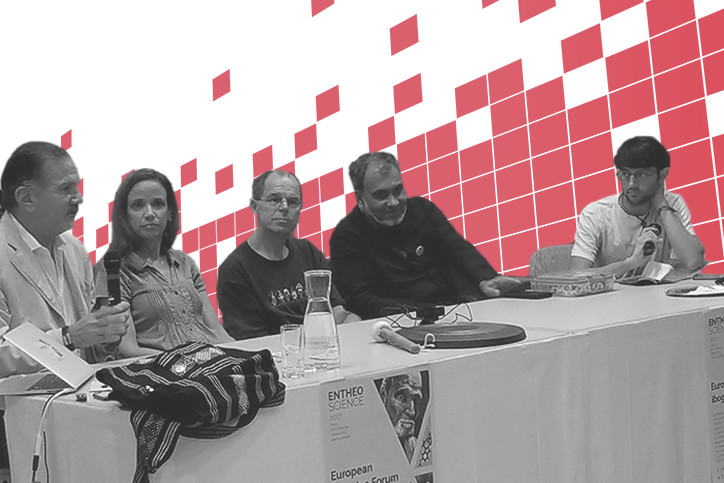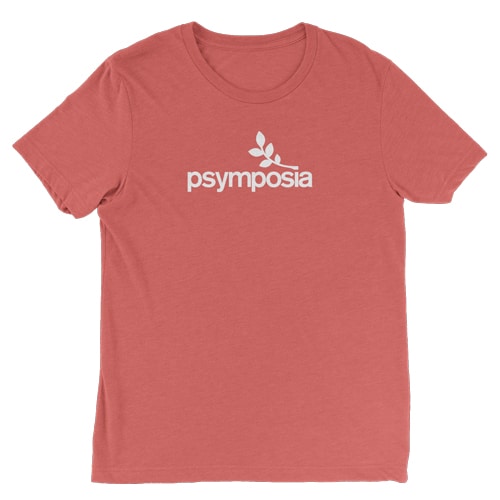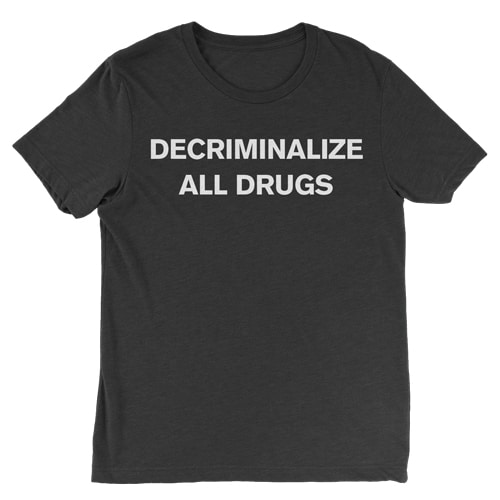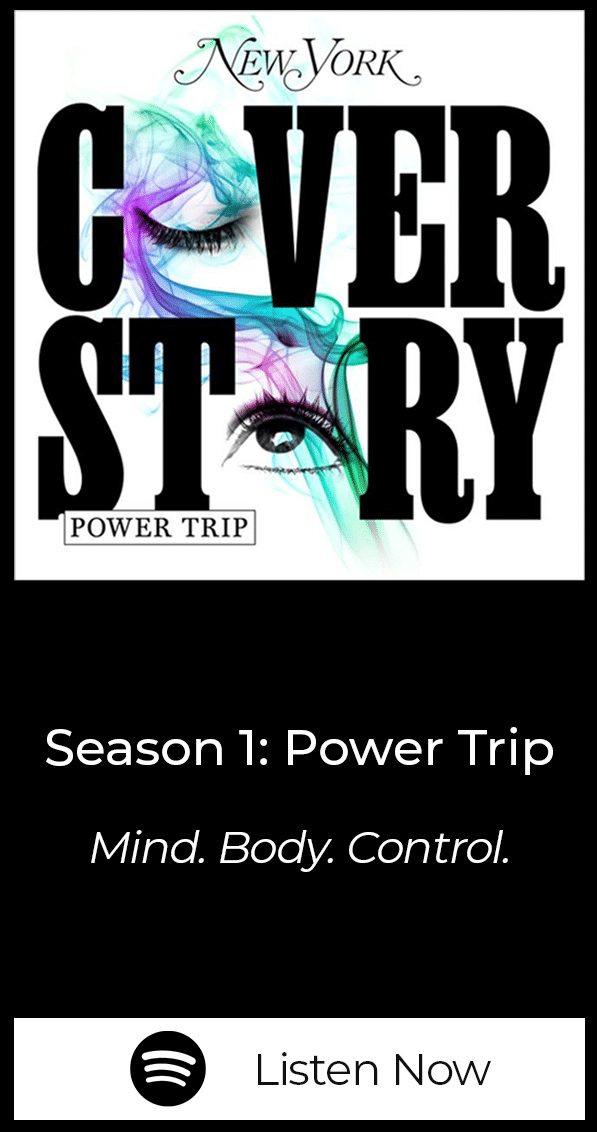Ibogaine Treatment Comes with Risks. We Had a Discussion About Safety with Medical Providers. | Part 10
Unlike other psychedelic drugs, ibogaine is known to be potentially cardiotoxic. There are a number of fatalities associated with its use, and anyone considering working with it should be aware of the risks. Read the full series.

Psymposia is a 501(c)(3) nonprofit research and media organization that offers critical perspectives on drugs, politics, and culture. We rely on contributions from our readers and listeners. Your support is vital to sustaining Psymposia.
Support Psymposia’s independent journalism on Patreon and help us drive the Mystery Machine! We’re a bunch of meddling kids who are unmasking the latest shenanigans on the psychedelics beat.
Update (January 4, 2018): Today, unfortunate news broke that one of the panelists in this article, Anwar Jeewa, was arrested in connection with a fatality at his ibogaine clinic in South Africa. A post-mortem established that the man had overdosed on Xanax, with ibogaine in his system. This underscores the real risks of ibogaine, even with an experienced provider. More information about ibogaine potentiation of benzodiazepines is available in our previous interview with Clare Wilkins.
Unlike other psychedelic drugs, ibogaine is known to be potentially cardiotoxic. There are a number of fatalities associated with its use, and anyone considering working with it should be aware of the risks.
The following are highlights from the safety panel at the European Ibogaine Forum in September. The panel was made up of experts in cardiology, nursing, and ibogaine facilitation.
This conversation is in no way intended to serve as an authoritative guide to safety protocol. What’s presented here is limited in scope and only scratches the surface of factors that should be considered. We strongly encourage anyone thinking about working with ibogaine in any capacity to take the time to do further research. As one resource for more information, you can check out the clinical guidelines established by the Global Ibogaine Therapy Alliance.
Dr. Jeffrey Kamlet is an expert on cardiac safety in ibogaine treatment who has witnessed over 1800 sessions over the past 20 years.
Jamie McAlpin is a nurse and Co-Founder of IbogaSafe, an on-site training service aimed at reducing the amount of adverse events during ibogaine treatment.
Dr. Uwe Maas is a clinical pediatrician who was initiated into the Mitsogho men’s cult in Gabon.
Anwar Jeewa is Director and Founder of Minds Alive Treatment Centre in Durban, South Africa.
Moderated by Mike Margolies.
Participating audience members:
Dr. Süster Strubelt is a clinical psychologist who was initiated into the Mabandji women’s cult in Gabon.
Jean-Nicolas Dénarié has lived in Gabon since 2006, was initiated into three different Bwiti traditions, and works on local sustainability projects.
Mike: So let’s kick this off with a straightforward question. I’m afraid to take iboga or ibogaine. Should I be? Can it be done safely?
Jeffrey: In general, ibogaine is a pretty damn safe drug.
In the healthy population, the mortality [rate] for ibogaine is considered to be about 0.3%, but remember we’re treating a very sick patient population. Patients with HIV, hepatitis, alcoholics — not the healthiest population in the world. Looking at numbers, the mortality rate can be as high, in untrained hands, as 3%.
I have a folder of over 60 ibogaine deaths. Every single one of those could have been avoided. Every single one. These people had severe addictions. Some of them had anorexia, bulimia. Some of them had pre-existing heart conditions.
So how safe is it? I mean if you’re young and healthy and you’ve got a normal EKG, you don’t have congenital prolonged QT syndrome, and you don’t have other drugs on board that are QT prolongers, yeah pretty safe.
Mike: Jamie, you have something to add?
Jamie: Yeah, I just want to add that the human body can only take a certain amount of metabolic stress, and ibogaine does stress the body on a metabolic level. Detox is very metabolically stressful as well, so those two things in combination tend to potentiate each other a little bit. Several of the cases that I reviewed [showed] signs of metabolic acidosis and other severe metabolic stressors, and that’s something the body can’t really handle.
Jeffrey: Many of our clients come to us addicted to opiates and benzos. [Many] who say, “Well, I was taking Xanax and I took ibogaine, and I never took another Xanax again.”
Well good for you. I’m here to tell you that ibogaine does nothing for benzodiazepine withdrawal. It does not help at all. It’s a different part of the brain, and it just doesn’t work. I’ve seen people on low doses still [experience] horrible anxiety because they missed their benzos. If you don’t realize that your patients are taking benzos and you stop them, or they’re alcoholic, the risk of having a seizure is very high.
Mike: I have a question about microdosing safety. Regarding the classical psychedelics, LSD, psilocybin, etc., which are not known to be cardiotoxic, I’ve read some papers saying there are potential cardiac risks with long-term microdosing. Is that something that could be a concern for ibogaine?
Anwar: To be very honest with you, it’s about time that we research microdosing. It’s crucial. None of us have the facts yet. If you listen to stories about people microdosing, it’s always different quantities, different sources. [We’re] not getting any consistency in any of the reports, so it’d be wrong for me to give you an answer for something we don’t know yet.
Jeffrey: I very often give boosters after a flood dose. Especially if you’ve been on like, Suboxone for 10 years, you might need some small doses. I’m talking about 100-200mg of ibogaine. You don’t have to be monitored, you can go play on your computer, watch TV. Then maybe 3 days later they get the 100mg and 3 days later 50mg, and now they’re good to go home.
[On a related noted], in my opinion using another psychedelic drug 90 days within ibogaine is pure insanity. There [are] clinics now advertising that they give you ibogaine and 7 days later give you ayahuasca. It doesn’t make sense to me. I think it’s disrespectful of the plant; it’s disrespectful to both these substances. It’s scary to me. [Ibogaine metabolite] noribogaine is supposed to last [in the system] for 90 days. Keep that a pure experience.
Jamie: It’s a very disturbing new trend – clinics offering ayahuasca, kambo, DMT, all these things while people still have a lot of noribogaine in their system. It’s not only unsafe, it’s very reckless in this vast uncontrolled experiment that we’re doing. And it’s not ethical. You’re literally turning your patients into human experiments without their consent. So from a legal standpoint, it’s not ethical at all, and it’s a very dangerous and reckless trend.
Anwar: I spend at least 2 hours on orientation and preparation. I think it’s important, especially for medical professionals, that you need to have informed consent. It’s our responsibility to tell the patient everything about ibogaine, the good and the bad. You explain everything and basically give them the worst-case scenario, not to scare them but to prepare them for what can happen.

Jeffrey: I also wanted to mention something I didn’t before. Don’t stack dosages, ok? As ibogaine is being converted by the liver into noribogaine, you start to see these bizarre T waves, the QT prolonging, the blood pressure going down, and the pulse going low. I’m concerned when I do that baseline EKG and the patient has a QTC baseline of 430 or 460. Whoa, ok not a good candidate for ibogaine.
There’s a blood test you can do, a genetic test, for congenital long QT syndrome. I think it’s 1 per 1000 of the population or something like that [who are born with it]. If you give them ibogaine, you will kill them. If you’re getting a baseline EKG on the patient and their QTC is in the 400’s or above, you better be really careful with that patient or defer to somebody who has a full cardiac setup.
Mike: I’ve got one more question for Uwe, then maybe we’ll open it up for other questions. So it sounds like from everything that’s been said so far, there’s obviously safety concerns around ibogaine and we need more research, but then of course iboga has been used for much longer in Gabon. So my question is, what kind of safety protocol is there in Gabon?
Uwe: During my initiation, I was told to report constantly about what I was seeing. I was led by about 8 experienced healers, who were sitting around me. They knew everything that was happening to me, and they told me to avoid these people, or open that door, or ask this person something, and things like this.
We were discussing with the Gabonese about the ibogaine treatment that is done in the West, and the only thing that they were really shocked about is that we’re not playing Bwiti music. They said, “Oh that’s very dangerous. They will all die.”
There’s so many things they’re doing for safety. I think the most important of all is that an initiate is never alone. There are always several experienced healers, several initiated people around.
Mike: So, questions from the audience?
Audience member: Jeffrey said that it’s dangerous to flood and then give another dose, so I wanted to ask the people who’ve been to Gabon if it’s common in Bwiti to keep on feeding iboga? Because I know there are ceremonies happening where [they] keep on feeding [iboga to the initiates] for 3 days.
Süster: Our experience with the Mitsogho tribe is that they were giving test doses and then 14 hours later, the flood dose. That was with the women. [The Mitsogho] never take [a flood dose] twice, but we know the Fang tribe does it one day after the other. We don’t know how safe this is, and as far as we know, the Mitsogho initiation is the original one.
Jean-Nicolas: In my experience, there are many different ways to do it. You’ve got the Disumba, for example, where the aim is that the Banzi (novice), they have him eat as much iboga as possible until he lies down, and when you pinch him, he won’t feel anything. That’s what they look for.
Anwar: I notice when giving [patients] that small dose initially, they’ve got an hour to play with. We get an idea of their tolerance level because if they feel absolutely nothing, and most of them feel absolutely nothing, then we can give them a bigger flood dose. But if they do feel something, we can drop the flood dose.
I’ve been practicing only one method and my protocol is very standard, but I use it because I find it to be very safe. We do a rough calculation, according to body weight, to get a minimum dose and a maximum dose [for the patient]. We give [the initial dose] depending on the patient’s tolerance level, and then we wait every 2 hours before we give more.
Uwe: I think if you look at the traditional ritual, everything, literally everything, is designed to make the [initiate] feel safe. The fire, the blessings, the drinks for the ones who are helping, everything is designed to make the [initiate] feel safe, and that’s the strong point of the ritual, in my view.
Mike: Any closing thoughts?
Jamie: I just want to add that providers really need to grasp that this is an extreme responsibility they’re taking on. When you give someone ibogaine, it’s potentially cardiotoxic, and heart patients don’t get sick slow. They get sick very fast, and seconds count. Not minutes, but seconds. So there’s a lot of preparation not only for the patient, but for the provider — to know what to do when the shit hits the fan.
Read Part 11: Is ibogaine the cure for opioid addiction? It’s not that simple.
Hey! Before you go… Psymposia is a 501(c)(3) non-profit media organization that offers critical perspectives on drugs, politics, and culture. We strive to ask challenging questions, and we’re committed to independent reporting, critical analysis, and holding those who wield power accountable.
Our perspectives are informed by critical analysis of the systemic crises of capitalism that have directly contributed to the unmitigated growth of addiction, depression, suicide, and the unraveling of our social relations. The same economic elite and powerful corporate interests who have profited from causing these problems are now proposing “solutions”—solutions which both line their pockets and mask the necessity of structural change.
In order for us to keep unpacking these issues and informing our audience, we need your continuing support. You can sustain Psymposia by becoming a supporter for as little as $2 a month.





